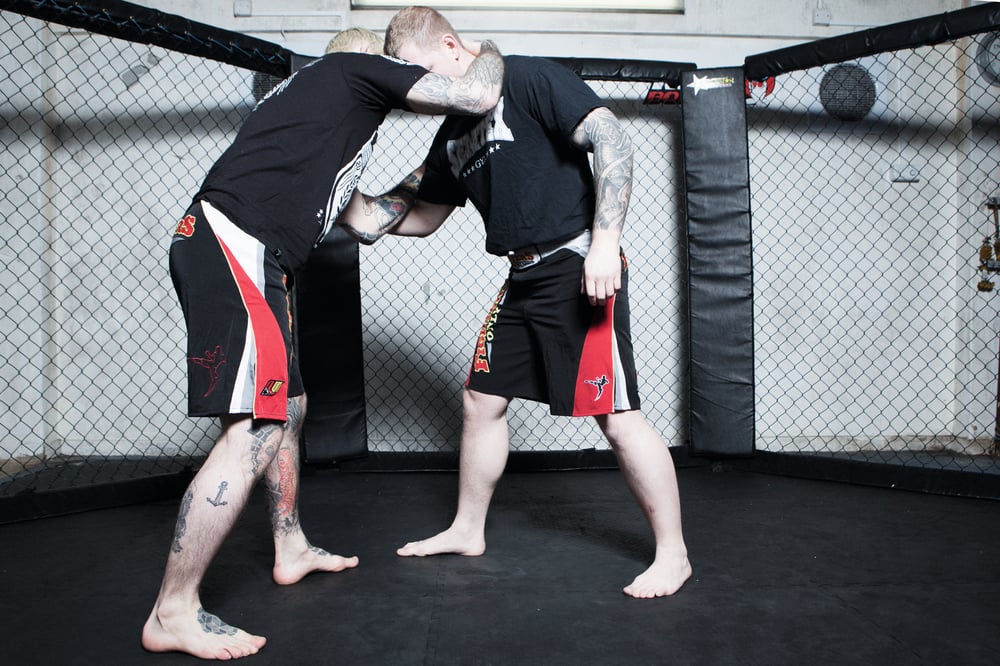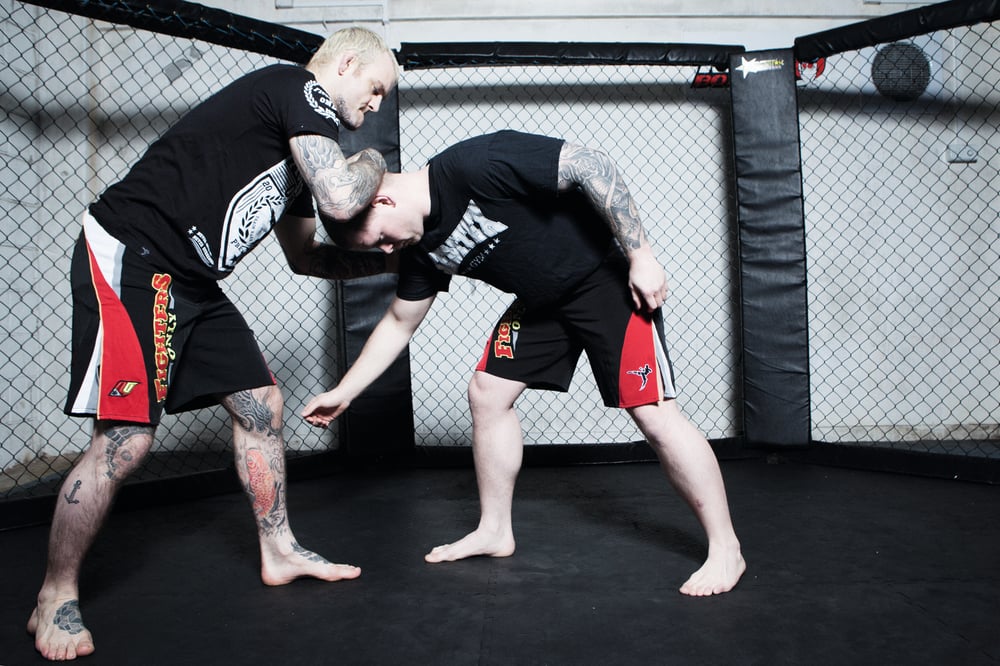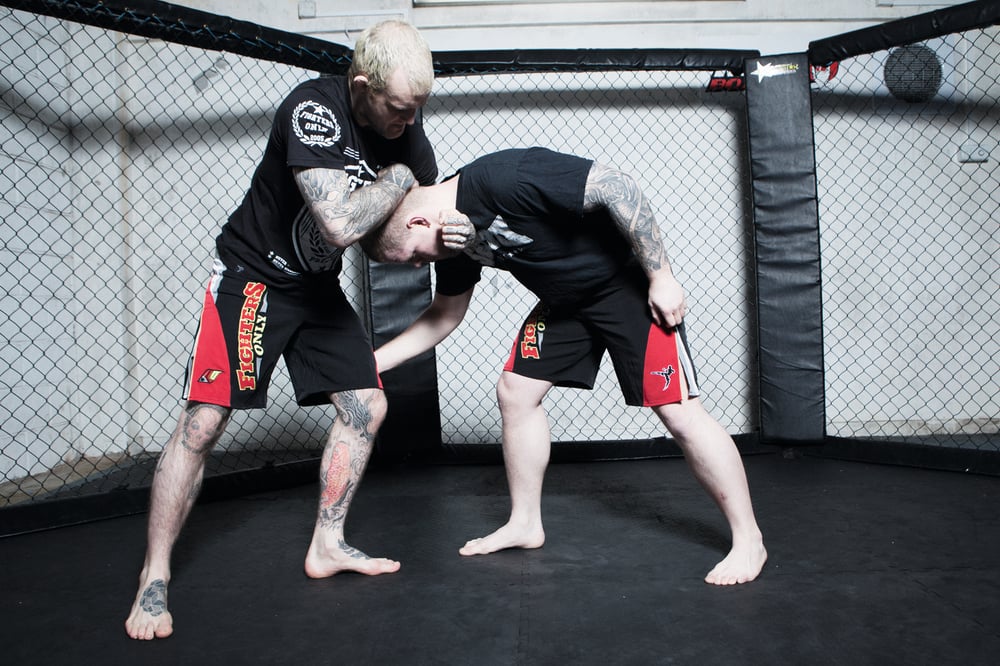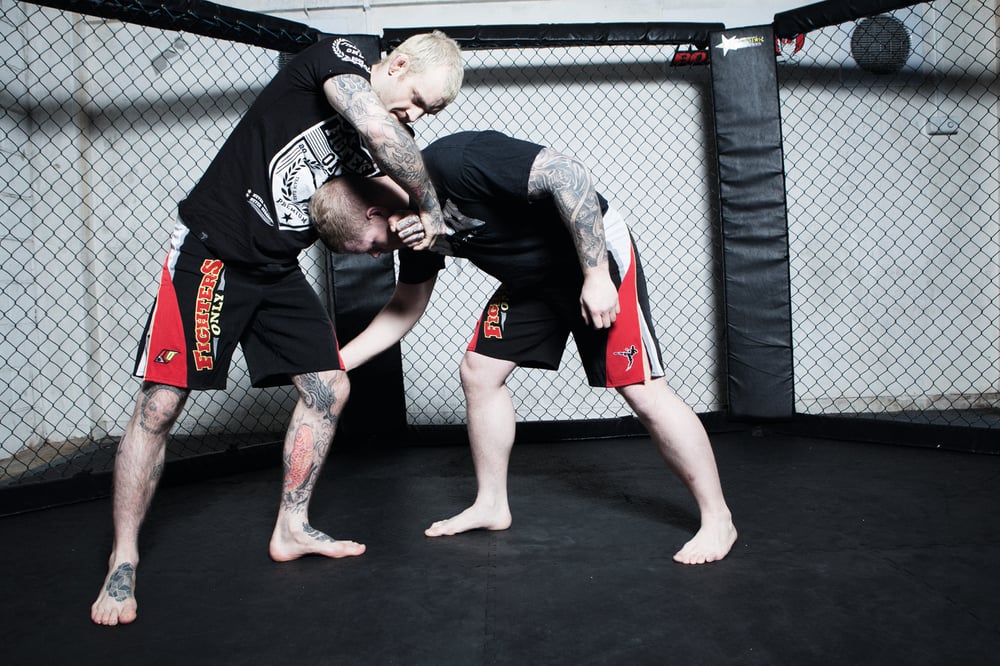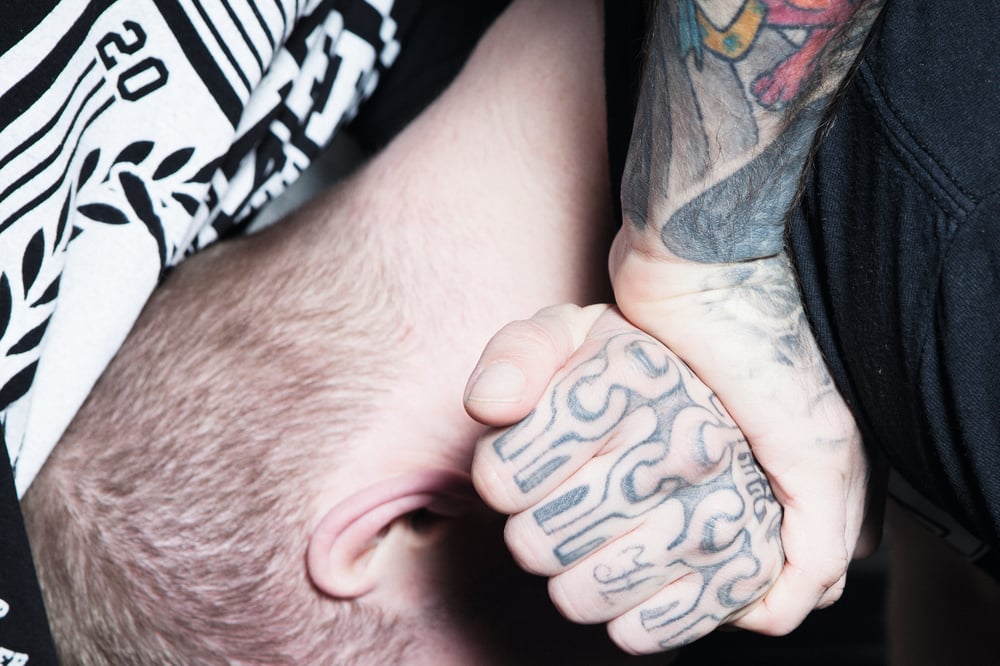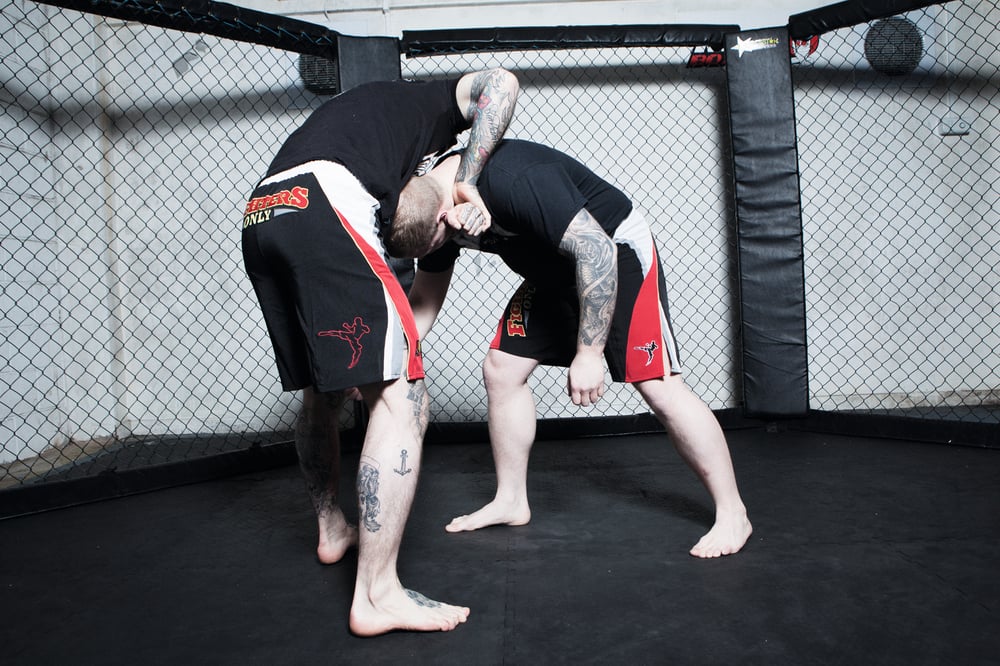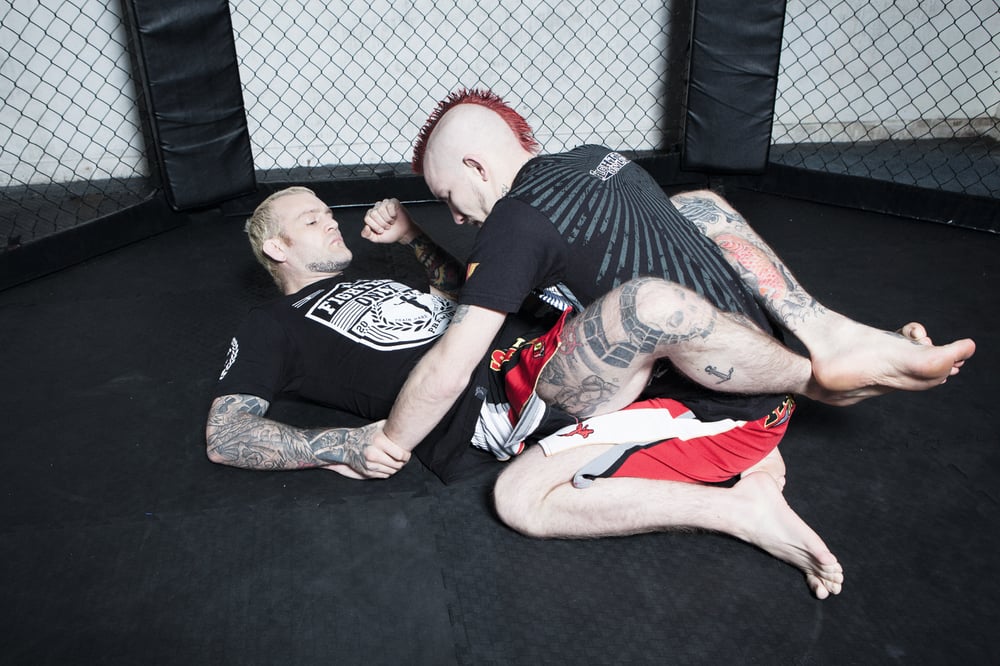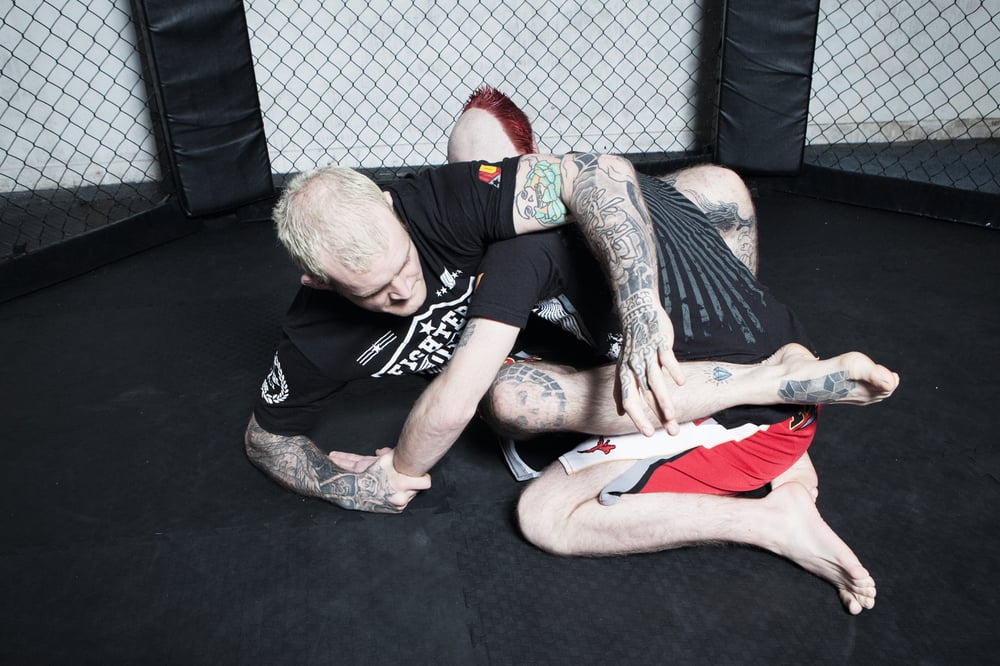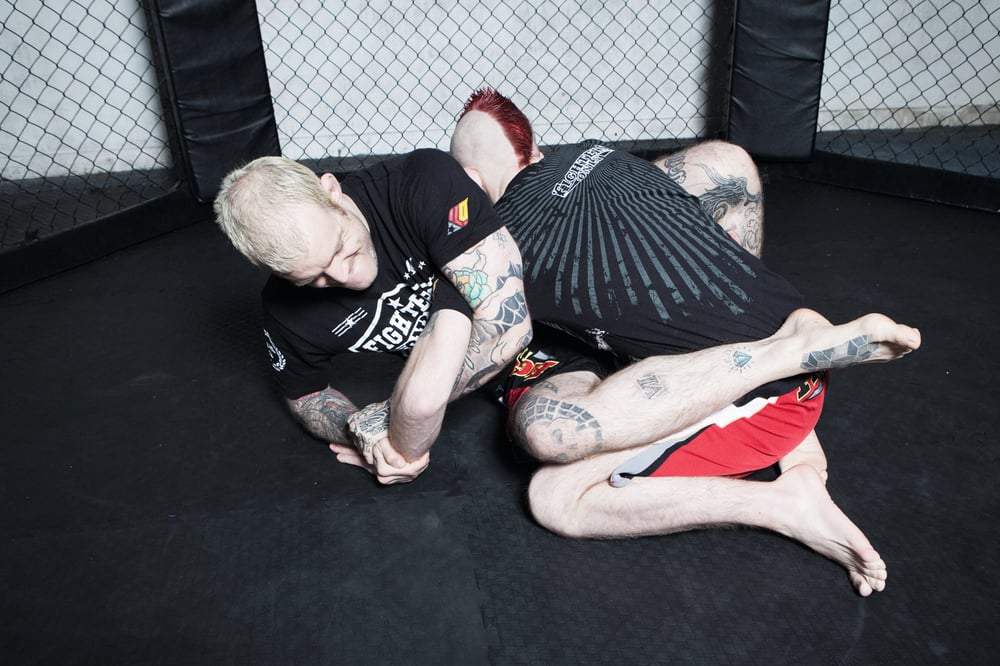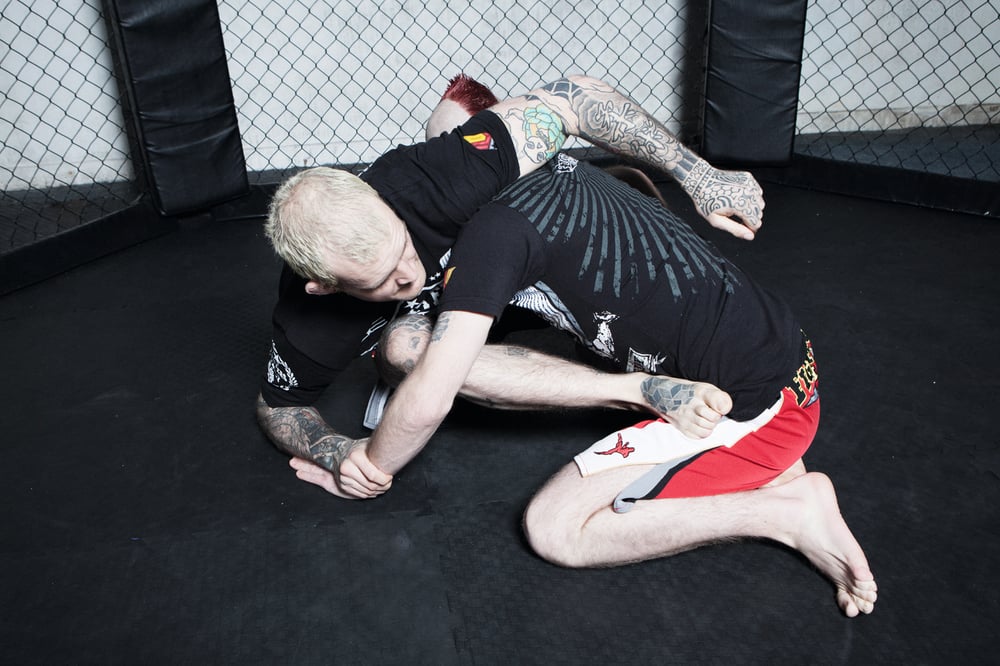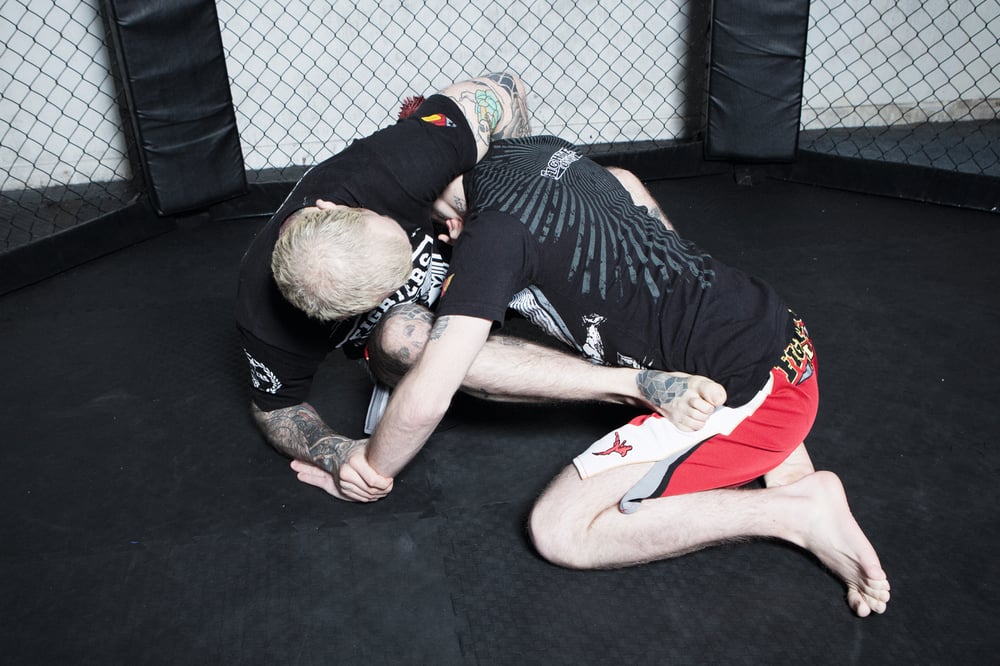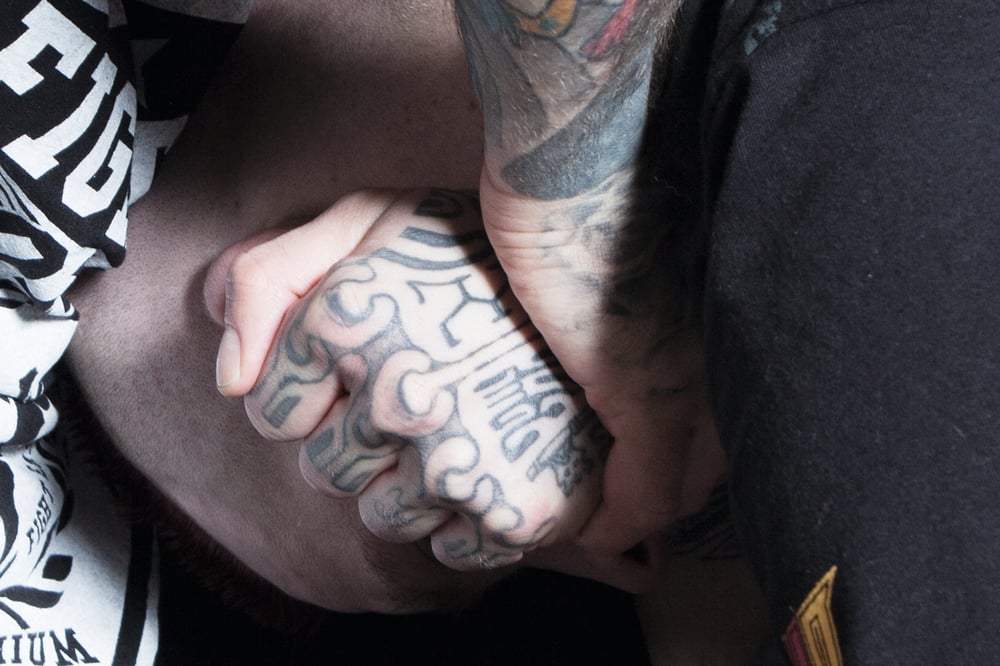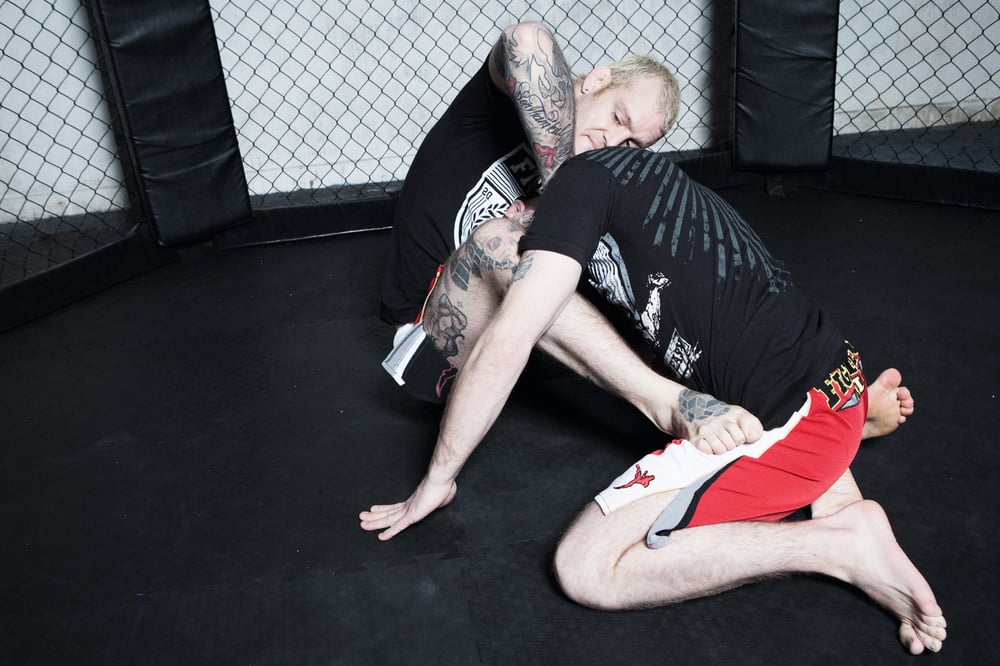
Issue 105
September 2013
FO shines the spotlight on the choke hold which, when performed correctly, will mean lights out for your opponent
There are two very distinct variations on the guillotine choke: the arm-in and arm-out. The guillotine is one of the only choke holds that crushes the windpipe when you target the neck, and with the arm-in variety you’ll be applying pressure to the main artery in the neck, thus cutting off the blood supply to the brain and inducing unconsciousness; and in this edition it’s the arm-in guillotine we’ll be focusing on.
The guillotine can be performed as a standing technique or on the mat, typically from the guard.
STANDING GUILLOTINE
1. Pete and Lee have tied up, with Pete having established the dominant inside controls, bicep and collar tie.
2. Pete executes a snap down, tugging on the arm and the collar, bringing Lee’s head out of position (in advance of his lead knee, and looking down at the mat).
Key point: Snap the head into the center, with the crown beneath your chest to close the avenues of escape presented beneath your arms.
3. Pete maintains control of the head and releases the arm in favor of the chin-strap.
Tip: Note that Pete’s elbow is closed in tight, blocking the avenue for the duck under, the typical counter to the snap down.
4. Pete closes the grip by grabbing his own wrist and blade of the hand.
5. Grip close up.
6. Pete goes elbow high, punching the forearm over Lee’s shoulder. The high elbow prevents attempts to duck under or tackle the legs. With the elbow high such efforts only serve to add pressure to the choke.
7. Free from the risk of the duck under or high crotch, Pete hips in to the standing guillotine to finish.
Tip: If you are close to the fence, drive your opponent up to the wall and use the fence to aid the finish.
KIMURA FAKE TO GUILLOTINE
1. Dan is in Pete’s closed guard. Pete has a wrist control on Dan’s arm; Dan has superior head position, thereby making the guillotine attack impossible.
2. Pete sits up to attack the kimura.
Key point: Pete scoots his butt back so that he can sit up far enough to get his armpit over Dan’s shoulder. If the figure-four is initiated over the arm rather than the shoulder the kimura will inevitably fail, and render the secondary guillotine attack useless.
3. Pete captures the figure-four grip by grabbing his own wrist. Dan defends by loading his weight on the arm, preventing Pete from moving the arm up the back.
4. Pete desists with the kimura and reaches back over Dan’s neck.
Key point: Note that as Pete targets the neck he has posted his hook on Dan’s hip. If he fails to execute this step then Dan will be able to stack before Pete can go elbow high on the grip.
5. Pete punches the hand in deep, securing the chin strap.
6. Only now does Pete release the wrist control. Keeping the grip prevents hand fighting as you establish the chin strap.
Tip: Get your head directly above your opponents, with your forehead on their back to prevent them escaping by backing out and regaining posture.
7. Pete gets the grip, palm on the back of the hand.
8. Grip detail.
9. Pete goes elbow high to torque the choke and finish the guillotine submission.
Exercise: Med ball endurance training
Train your grip endurance by squeezing the medicine ball and performing isometric holds.
...


